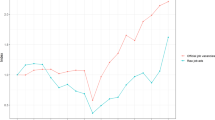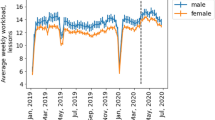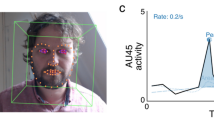Abstract
Past research shows that decision-makers discriminate against applicants with career breaks. Career breaks are common due to caring responsibilities, especially for working mothers, thereby leaving job seekers with employment gaps on their résumés. In a preregistered audit field experiment in the United Kingdom (n = 9,022), we show that rewriting a résumé so that previously held jobs are listed with the number of years worked (instead of employment dates) increases callbacks from real employers compared to résumés without employment gaps by approximately 8%, and with employment gaps by 15%. A series of lab studies (an online pilot and two preregistered experiments; n = 2,650) shows that this effect holds for both female and male applicants—even when compared to applicants without employment gaps—as well as and for applicants with less and more total job experience. The effect is driven by making the applicant’s job experience salient, not as a result of novelty or ease of reading.
This is a preview of subscription content, access via your institution
Access options
Access Nature and 54 other Nature Portfolio journals
Get Nature+, our best-value online-access subscription
$32.99 / 30 days
cancel any time
Subscribe to this journal
Receive 12 digital issues and online access to articles
$119.00 per year
only $9.92 per issue
Buy this article
- Purchase on SpringerLink
- Instant access to full article PDF
Prices may be subject to local taxes which are calculated during checkout

Similar content being viewed by others
Data availability
Data for all studies are available at https://osf.io/3gahc/?view_only=a8188dc8f9e8473e8722fd57b92484ba.
Code availability
Code for all studies is available at https://osf.io/3gahc/?view_only=a8188dc8f9e8473e8722fd57b92484ba.
References
Terrelonge, Z. Most common reasons for a career break and staff expectations when returning to work. RealBusiness https://realbusiness.co.uk/most-common-reason-for-a-career-break-and-staff-expectations-afterwards (2017).
Montenovo, L. et al. Determinants of Disparities in Covid-19 Job Losses. NBER Working Paper No. 27132 (National Bureau of Economic Research, 2020).
Fuller, S. & Qian, Y. Covid-19 and the gender gap in employment among parents of young children in Canada. Gend. Soc. 35, 206–217 (2021).
Thévenon, O. & Solaz, A. Labour market effects of parental leave policies in OECD countries. OECDiLibrary https://www.oecd-ilibrary.org/social-issues-migration-health/labour-market-effects-of-parental-leave-policies-in-oecd-countries_5k8xb6hw1wjf-en (2013).
Correll, S. J., Benard, S. & Paik, I. Getting a job: is there a motherhood penalty? Am. J. Sociol. 112, 1297–1338 (2007).
Eriksson, S. & Rooth, D. O. Do employers use unemployment as a sorting criterion when hiring? Evidence from a field experiment. Am. Econ. Rev. 104, 1014–1039 (2014).
Kroft, K., Lange, F. & Notowidigdo, M. J. Duration dependence and labor market conditions: evidence from a field experiment. Q. J. Econ. 128, 1123–1167 (2013).
Namingit, S., Blankenau, W. & Schwab, B. Sick and tell: a field experiment analyzing the effects of an illness-related employment gap on the callback rate. J. Econ. Behav. Org. 185, 865–882 (2021).
Oberholzer-Gee, F. Nonemployment stigma as rational herding: a field experiment. J. Econ. Behav. Org. 65, 30–40 (2008).
Weisshaar, K. From opt out to blocked out: the challenges for labor market re-entry after family-related employment lapses. Am. Sociol. Rev. 83, 34–60 (2018).
Borjas, G. J. Labor Economics 8th edn (McGraw-Hill, 2020).
Bertrand, M., Goldin, C. & Katz, L. F. Dynamics of the gender gap for young professionals in the financial and corporate sectors. Am. Economic J. Appl. Econ. 2, 228–255 (2010).
Van Belle, E., Di Stasio, V., Caers, R., De Couck, M. & Baert, S. Why are employers put off by long spells of unemployment? Eur. Sociol. Rev. 34, 694–710 (2018).
Budig, M. J. & England, P. The wage penalty for motherhood. Am. Sociol. Rev. 66, 204–225 (2001).
Gough, M. & Noonan, M. A review of the motherhood wage penalty in the United States. Sociol. Compass 7, 328–342 (2013).
Sigle-Rushton, W. & Waldfogel, J. Motherhood and women’s earnings in Anglo-American, Continental European, and Nordic countries. Fem. Econ. 13, 55–91 (2007).
Brown, L. M. The relationship between motherhood and professional advancement. Empl. Relat. 32, 470–494 (2010).
Hoyt, C. L. Women, men, and leadership: exploring the gender gap at the top. Soc. Pers. Psychol. Compass 4, 484–498 (2010).
Schein, V. E. The work/family interface: challenging “corporate convenient”. Women Manag. Rev. 8, 22–27 (1993).
Williams, J. C. Beyond the glass ceiling: the maternal wall as a barrier to gender equality. T. Jefferson L. Rev. 26, 1–14 (2003).
Blau, F. D., Brummund, P. & Liu, A. Y. H. Trends in occupational segregation by gender 1970–2009: adjusting for the impact of changes in the occupational coding system. Demography 50, 471–492 (2013).
Samek, A. Gender differences in job entry decisions: a university-wide field experiment. Manag. Sci. 65, 3272–3281 (2019).
Fernandez-Mateo, I. & King, Z. Anticipatory sorting and gender segregation in temporary employment. Manag. Sci. 57, 989–1008 (2011).
Bohnet, I. What Works: Gender Equality by Design (Harvard Univ. Press, 2016).
Exley, C. L., Niederle, M. & Vesterlund, L. Knowing when to ask: the cost of leaning in. J. Polit. Econ. 128, 816–854 (2020).
Brands, R. A. & Fernandez-Mateo, I. Leaning out: how negative recruitment experiences shape women’s decisions to compete for executive roles. Adm. Sci. Q. 62, 405–442 (2017).
Baert, S. in Audit Studies: Behind the Scenes with Theory, Method, and Nuance (ed. Gaddis, S. M.) 63–77 (Springer, 2018).
Booth, A. & Leigh, A. Do employers discriminate by gender? A field experiment in female-dominated occupations. Econ. Lett. 107, 236–238 (2010).
He, J. & Kang, S. Covering in cover letters: gender and self-presentation in job applications. Acad. Manag. J. 64, 1097–1126 (2021).
Bertrand, M. & Mullainathan, S. Are Emily and Greg more employable than Lakisha and Jamal? A field experiment on labor market discrimination. Am. Econ. Rev. 94, 991–1013 (2004).
Ghayad, R. The Jobless Trap (Northeastern Univ. Press, 2013).
Pedulla, D. S. Penalized or protected? Gender and the consequences of nonstandard and mismatched employment histories. Am. Sociol. Rev. 81, 262–289 (2016).
Firth, M. Sex discrimination in job opportunities for women. Sex Roles 8, 891–901 (1982).
Dobbin, F. & Kalev, A. The promise and peril of sexual harassment programs. Proc. Natl Acad. Sci. USA 116, 12255–12260 (2019).
Galinsky, A. D. & Moskowitz, G. Perspective-taking: decreasing stereotype expression, stereotype accessibility, and in-group favoritism. J. Pers. Soc. Psychol. 78, 708–724 (2000).
Axt, J. R. & Lai, C. K. Reducing discrimination: a bias versus noise perspective. J. Pers. Soc. Psychol. 117, 26 (2019).
Bohnet, I., Van Geen, A. & Bazerman, M. When performance trumps gender bias: joint vs. separate evaluation. Manag. Sci. 62, 1225–1234 (2016).
Landivar, L. C., Ruppanner, L., Scarborough, W. J. & Collins, C. Early signs indicate that COVID-19 is exacerbating gender inequality in the labor force. Socius 6, 1–3 (2020).
Nicks, L., Burd, H. & Barnes, J. Returners qualitative analysis: organisations’ experiences with returners. Government Equalities Office https://assets.publishing.service.gov.uk/government/uploads/system/uploads/attachment_data/file/790394/Returners-qualitative-analysis3.pdf (2019).
Baert, S. & Vujić, S. Does it pay to care? Volunteering and employment opportunities. J. Popul. Econ. 31, 819–836 (2018).
Morgan, W. B., Walker, S. S., Hebl, M. M. & King, E. B. A field experiment: reducing interpersonal discrimination toward pregnant job applicants. J. Appl. Psychol. 98, 799–809 (2013).
Hogg, M.A. in Self and Social Identity (eds Brewer, M. B. & Hewstone, M.) 203–231 (Blackwell, 2004).
Hogg, M. A. & Turner, J. C. Interpersonal attraction, social identification and psychological group formation. Eur. J. Soc. Psychol. 15, 51–66 (1985).
Kahneman, D. & Tversky, A. Subjective probability: a judgment of representativeness. Cogn. Psychol. 3, 430–454 (1972).
Kobrynowicz, D. & Biernat, M. Decoding subjective evaluations: how stereotypes provide shifting standards. J. Exp. Soc. Psychol. 33, 579–601 (1997).
Milkman, K. L., Akinola, M. & Chugh, D. Temporal distance and discrimination: an audit study in academia. Psychol. Sci. 23, 710–717 (2012).
Tversky, A. & Kahneman, D. Judgment under uncertainty: heuristics and biases. Science 85, 1124–1131 (1974).
Uhlmann, E. L. & Cohen, G. L. Constructed criteria: redefining merit to justify discrimination. Psychol. Sci. 16, 474–480 (2005).
Williams, J. C. The pandemic has exposed the fallacy of the “ideal worker”. Harvard Business Review (11 May 2020).
Karren, R. & Sherman, K. Layoffs and unemployment discrimination: a new stigma. J. Manage. Psychol. 27, 848–863 (2012).
Weisshaar, K. Employment lapses and subsequent hiring disadvantages: an experimental approach examining types of discrimination and mechanisms. Socius 7 (2021).
Cunningham, J. & Macan, T. Effects of applicant pregnancy on hiring decisions and interview ratings. Sex Roles 57, 497–508 (2007).
Dana, J., Dawes, R. & Peterson, N. Belief in the unstructured interview: the persistence of an illusion. Judgm. Decis. Mak. 8, 512 (2013).
Kausel, E. E., Culbertson, S. S. & Madrid, H. P. Overconfidence in personnel selection: when and why unstructured interview information can hurt hiring decisions. Organ. Behav. Hum. Decis. Process. 137, 27–44 (2016).
Bragger, J. D., Kutcher, E., Morgan, J. & Firth, P. The effects of the structured interview on reducing biases against pregnant job applicants. Sex Roles 46, 215–226 (2002).
Brecher, E., Bragger, J. & Kutcher, E. The structured interview: reducing biases toward job applicants with physical disabilities. Emp. Resp. Rights J. 18, 155–170 (2006).
Black, D. E. & Vance, M. D. Do first impressions last? The impact of initial assessments and subsequent performance on promotion decisions. Manag. Sci. 67, 3985–4642 (2020).
Van Borm, H. & Baert, S. Diving in the Minds of Recruiters: What Triggers Gender Stereotypes in Hiring? Working Paper No. 22/1043 (Ghent University, Faculty of Economics and Business Administration, 2022).
Madera, J. M., Hebl, M. R. & Martin, R. C. Gender and letters of recommendation for academia: agentic and communal differences. J. Appl. Psychol. 94, 1591 (2009).
Hainmueller, J., Hangartner, D. & Yamamoto, T. Validating vignette and conjoint survey experiments against real-world behavior. Proc. Natl Acad. Sci. USA 112, 2395–2400 (2015).
Rubin, D. B. Estimating causal effects of treatments in randomized and nonrandomized studies. J. Educ. Psychol. 66, 688 (1974).
Angrist, J. D. & Pischke, J. S. Mostly Harmless Econometrics (Princeton Univ. Press, 2008).
Hauser, O. P., Linos, E. & Rogers, T. Innovation with field experiments: studying organizational behaviors in actual organizations. Res. Organ. Behav. 37, 185–198 (2017).
Palan, S. & Schitter, C. Prolific.ac—A subject pool for online experiments. J. Behav. Exp. Finance 17, 22–27 (2018).
Peer, E., David, R., Andrew, G., Zak, E. & Ekaterina, D. Data quality of platforms and panels for online behavioral research. Behav. Res. Methods 54, 1643–1662 (2022).
Unemployment Rates During the COVID-19 Pandemic: In Brief (Congressional Research Service, 2021); https://fas.org/sgp/crs/misc/R46554.pdf
Births by Parents’ Characteristics in England and Wales: 2016 (Office for National Statistics, 2017); https://www.ons.gov.uk/peoplepopulationandcommunity/birthsdeathsandmarriages/livebirths/bulletins/birthsbyparentscharacteristicsinenglandandwales/2016
Milestones: Journeying into Adulthood (Office for National Statistics, 2019); https://www.ons.gov.uk/peoplepopulationandcommunity/populationandmigration/populationestimates/articles/milestonesjourneyingintoadulthood/2019-02-18
Top 100 Baby Names in England and Wales: Historical Data (Office for National Statistics, 2014); https://www.ons.gov.uk/peoplepopulationandcommunity/birthsdeathsandmarriages/livebirths/datasets/babynamesenglandandwalestop100babynameshistoricaldata
“Sarah”. Behind the Name https://www.behindthename.com/name/sarah/rating (2020).
Hanks, P., Coates, R. & McClure, P. The Oxford Dictionary of Family Names in Britain and Ireland (Oxford Univ. Press, 2016).
Paull, G. Quantitative analysis of those returning to the labour market following a break to care for others. Government Equalities Office https://assets.publishing.service.gov.uk/government/uploads/system/uploads/attachment_data/file/717833/Characteristics_of_Returners_and_Potential_Returners.pdf (2018).
Acknowledgements
We are grateful to the Behavioural Insights Team for their research design and implementation of the field experiment, including substantial contributions from V. Roy-Chowdhury and T. Hardy. We are also grateful to A. Sutherland from the Behavioural Insights Team for his help as well. This study was supported by the UK Government Equalities Office (to BIT’s Gender and Behavioural Insights (GABI) programme), the Swiss National Science Foundation (grant No. PR00P1_193128 to J.L.G.) and the UKRI Future Leaders Fellowship (grant No. MR/T020253/1 to O.P.H.). The funders had no role in the design of the study, data collection and analysis, decision to publish or preparation of the manuscript.
Author information
Authors and Affiliations
Contributions
L.N. designed the intervention and field experiment; A.S.K. and O.P.H. input into the field experiment and designed the online experiments; A.S.K. performed the online experiment research; A.S.K. analysed the data; and all authors wrote the paper.
Corresponding authors
Ethics declarations
Competing interests
L.N. is employed by the Behavioural Insights Team. The rest of the authors declare no competing interests.
Peer review
Peer review information
Nature Human Behaviour thanks Christopher Bryan, Eva Van Belle and Sunčica Vujić for their contribution to the peer review of this work.
Additional information
Publisher’s note Springer Nature remains neutral with regard to jurisdictional claims in published maps and institutional affiliations.
Supplementary information
Supplementary Information
Supplementary Figs. 1–3, Tables 1–9 and Additional details.
Rights and permissions
Springer Nature or its licensor (e.g. a society or other partner) holds exclusive rights to this article under a publishing agreement with the author(s) or other rightsholder(s); author self-archiving of the accepted manuscript version of this article is solely governed by the terms of such publishing agreement and applicable law.
About this article
Cite this article
Kristal, A.S., Nicks, L., Gloor, J.L. et al. Reducing discrimination against job seekers with and without employment gaps. Nat Hum Behav 7, 211–218 (2023). https://doi.org/10.1038/s41562-022-01485-6
Received:
Accepted:
Published:
Issue date:
DOI: https://doi.org/10.1038/s41562-022-01485-6



